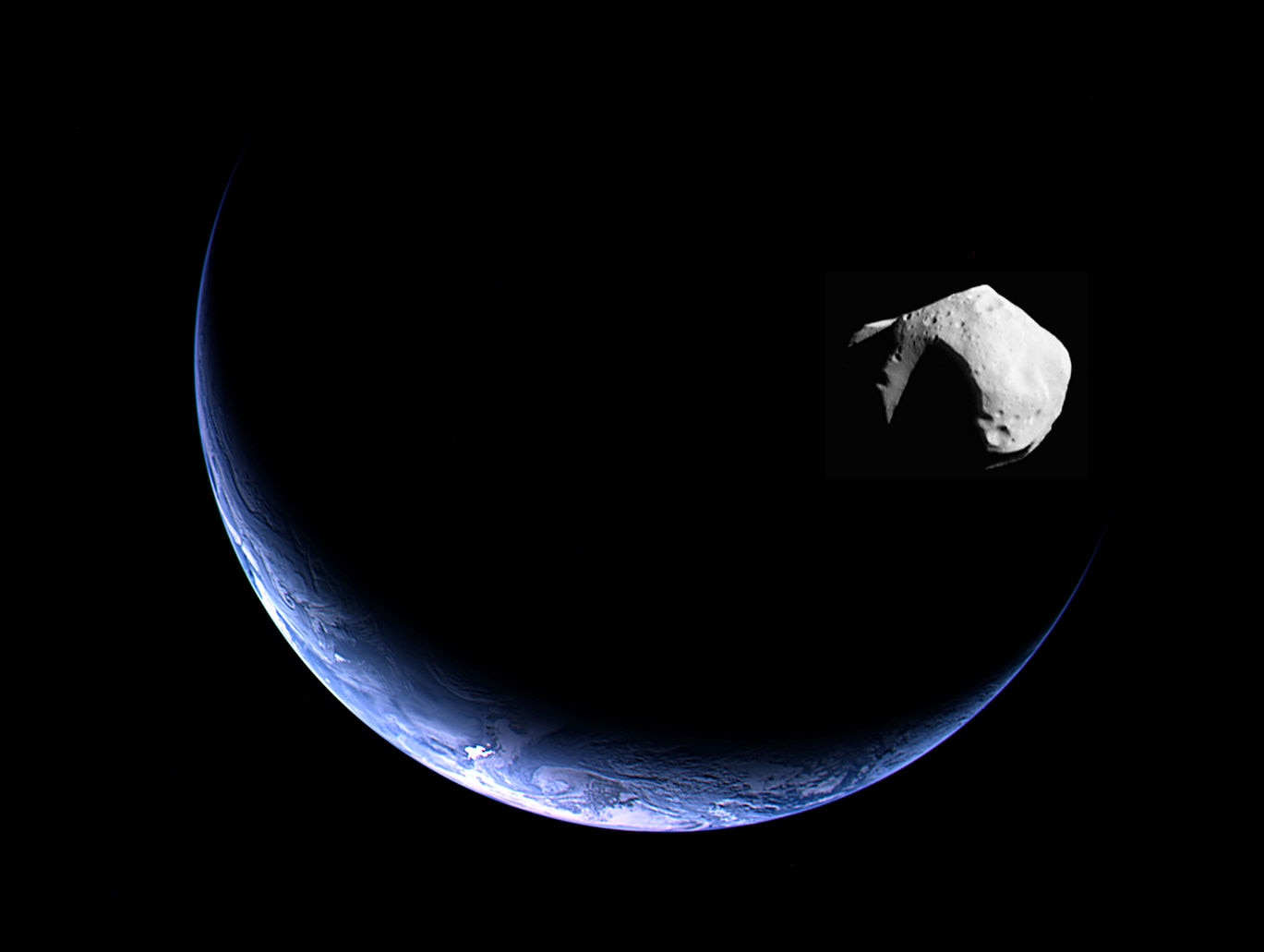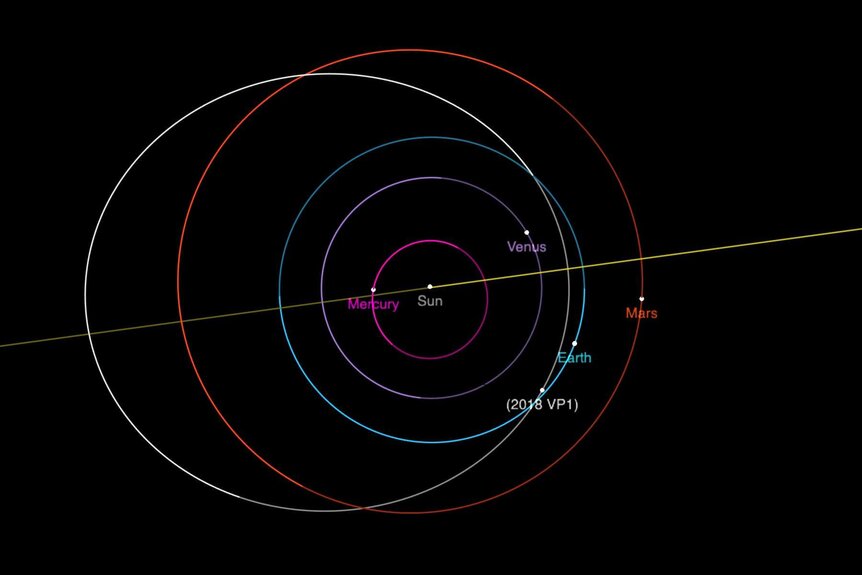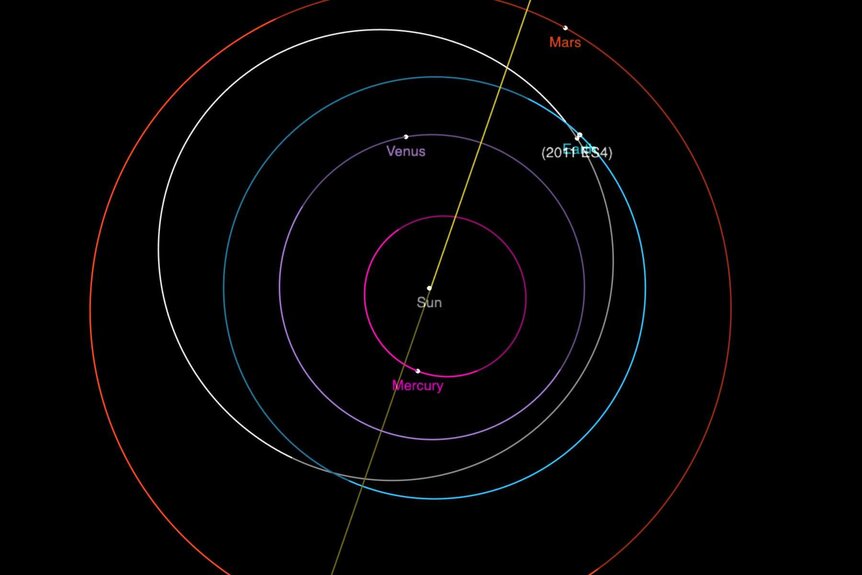Create a free profile to get unlimited access to exclusive videos, sweepstakes, and more!
No, two approaching near-Earth asteroids won’t hit us. 2020, cool your jets.

Two asteroids are set to zip past the Earth at relatively close distances over the next couple of months. Despite what you might read in the usual tabloid sites and weird YouTube channels with terrible audio, both are extremely unlikely to hit us.
One is getting a lot of buzz on social media because it may pass us on Nov. 2, the eve of the US election. To me, the cool thing is that the asteroid’s designation is 2018 VP1, so at least that’s mildly appropriate.
2018 VP1 is tiny, probably only about 2 meters across, which makes it very hard to observe unless it’s very close because it’s so faint. It was discovered in 2018, and was only seen for about 13 days. That’s not very long, which means it’s hard to get a good orbit calculation for it. An analogy I like makes this clear:
As I've written before, when an asteroid is first discovered, the orbit calculated for it is pretty fuzzy, because we don't have a long enough arc to really be able to predict where it will be in the future. Small uncertainties in the position early on add up to big ones later. The analogy I like is if you're an outfielder in a baseball game, and as soon as the batter hits the ball you close your eyes. Now, predict where the ball will be when it lands. Yeah, nope. But if you keep watching it you’ll be able to see its trajectory much better.
It hasn’t been seen since 2018 because of its distance, so the orbit is fairly uncertain (JPL gives it a “condition code” of 7 on a scale of 1 to 9, meaning the orbit is really not well known).
JPL put the closest approach at 11:33 UTC on Nov. 2, passing us at a distance of 420,000 km, or somewhat farther away than the Moon. But, because the orbit is so uncertain, there's a chance it will hit us, with odds of about 1 in 240. That’s an impact chance of 0.4 percent; in other words, if it makes you feel better, a 99.6 percent chance it’ll miss.
Also, because of the way the geometry works, in general as the orbit calculations tighten up with more observations, the impact risk tends to drop. The possible future positions of the asteroid make a shape like a cone (a bit like how projected hurricane paths on maps make a widening triangle), and as the uncertainty drops the cone tightens, usually with the Earth winding up being outside it.
Currently, the Earth is inside that cone for VP1, but very near the edge. So I’m pretty sure it’ll miss. And if it doesn’t, an impact’s no big deal. At 2 meters, it’ll burn up high in the atmosphere and just make a pretty light show for someone. No biggie.
The timing is funny, since so many of us will be nervously looking to the next day on the day it passes, but heck, there’s always something going on; any asteroid pass will be within a day or two of some Earthly event or other. So breathe easy: If it hits or misses, it hardly matters on a personal level.
As an aside, the orbital period for VP1 is almost exactly two years, putting it in resonance with Earth — it and the Earth are in roughly the same spot in space every two years. Given how close to Earth it gets I think this may be a coincidence; certainly, after this pass, its orbit will change enough due to Earth’s gravity to change its period, too. We’ll see.
The other rock is also interesting. 2011 ES4 is much larger, 20 to 40 meters in size, and on Sept. 1, it may pass closer than VP1 will, getting just 120,000 kilometers from us. Mind you, that’s a nominal distance; like with VP1 the orbit isn’t well known (it also has a condition code of 7) so it may get closer. However, in this case, there’s essentially zero chance of it hitting us then, despite the orbital uncertainty. The projected cone doesn’t open enough to include the Earth, so we’re safe.
Which is good! At a minimum it’s about the size of the Chelyabinsk asteroid, which made quite the sturm und drang when it blew up high over Russia in 2013, detonating with the force of half a million tons of TNT. It blew out windows, damaged buildings, and injured over a thousand people (from flying glass when the shock wave hit). ES4 could easily double that in an impact, so best it stay away.
Like VP1, it was only observed for a short time after it was discovered (just 4 days in 2011!), and has an orbit of 1.14 years. That makes it hard to observe since its orbit and ours only bring it close every 9 years or so. So, this close pass is actually a good thing! It means we can get lots more observations of it, nail down the orbit, and figure out just how big a threat it really is. Again, it’s likely that the odds of future impacts will go down once that’s done (and they’re already at a meager 1 in 400 million for an impact in 2031, the next pass).
Of course, and as usual, despite the reality of the situation, there will be those who overblow the risk, despite always being wrong. It’s weird how every time a small asteroid passes Earth the usual chuckleheaded doomsday sites go ballistic, as if they never learn the lesson from the last hundred times they breathlessly overstated the risk.
But then, perhaps they did learn a lesson: Scaring people = clicks.
Caveat lector. My aim is to help folks better understand what we’re dealing with here, not scare them needlessly. But my goal is a better science-educated public, not clicks. Well, clicks are nice; it means more people are getting a dose of reality.
So, ahem, tell a friend about this article. These rocks pose no threat. And as always, if one ever really does, oh trust me, you’ll hear about from astronomers. We’ll be screaming it from the observatory tops.
* Technically it’s a nappe, since a cone is two nappes connected tip-to-tip, but only like five people seem to know the difference. I bow to the will of the people on this one.






























